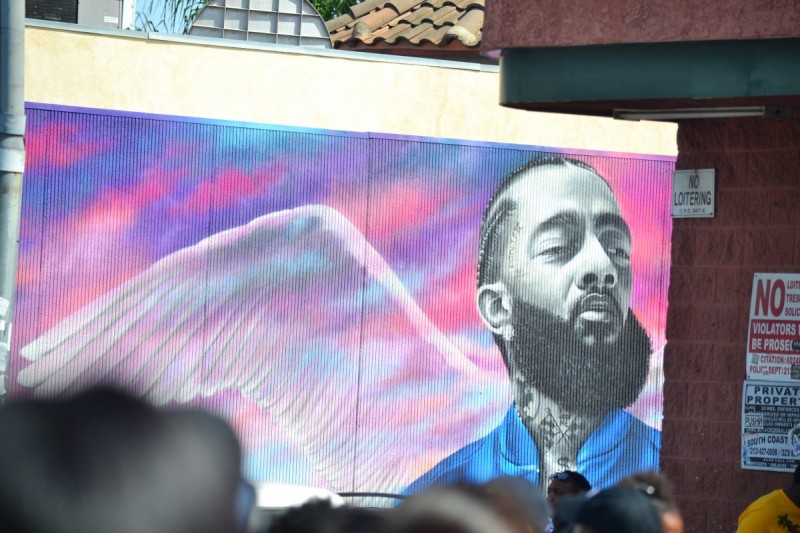National links: The late Nipsey Hussle understood cities, and the people who live in them

A Nipsey Hussle memorial mural at Slauson and Crenshaw streets. Image by ATOMIC Hot Links licensed under Creative Commons.
Nipsey Hussle’s dream of racial and economic equity for his neighborhood spanned across music and media. Planners in Vancouver are widening sidewalks to accommodate more people in the densifying city. Transgender and nonbinary teens are vulnerable to homelessness.
Why we should all know Nipsey Hussle: On the intersection of Crenshaw and Slauson in South Los Angeles, the late Nipsey Hussle fought to claim place and space in a community rooted in decades of racist policies. Through multiple albums, nearly 50 singles, and a Grammy nomination, Hussle expressed the need for the community to claim what was theirs. Sahra Sulaiman breaks down Hussle’s legacy and his work to boost the morale of the black community in South LA. (Sahra Sulaiman | Streetsblog LA)
Vancouver makes more space for people walking: As the city becomes denser, Vancouver, British Columbia planners and engineers are responding to the increased number of people walking around by expanding its sidewalks. In some areas, that means taking pavement away from cars, but elsewhere it means pushing buildings back. The widenings have also been complemented with crosswalk and bike lane improvements. (Frances Bula | The Globe and Mail)
How trans teens experience homelessness: Even though transgender youth and non-binary teens make up a small percentage of people experiencing homelessness nationally, about a third of trans Americans will experience homelessness at some point in their lives, according to a 2015 study. They’re more likely to be unsheltered than any other population, and about half of the homeless trans population is in California. (Sarah Holder | Citylab)
Did Waze hijack Los Angeles?: When Waze launched in 2011, Los Angeles went wild, lauding the app for its aggressive approach to navigation and the godly convenience of its algorithms. Nowadays, however, Angelenos are finding their residential streets turned into makeshift highways. The chaos has triggered a debate on how tech companies’ navigation apps provide a false narrative of speed, and how data can send cars speeding through residential neighborhoods. (Jonathan Littman | Los Angeles Magazine)
Bringing back the land value tax: The land value tax emerged in the 19th century but hasn’t been used much until recently, when Millbourne, Pennsylvania used it to revive the area after it fell into hard times from the loss of a Sears. The tax is intended to encourage landowners to make more productive use of large properties. A former car dealership and a bowling alley, the second and third largest parcels in the city, are now under development. Now some cities are taking a second look at the tax. (J. Brian Charles | Governing)
Quote of the Week
“Finally, the bill perpetuates the false notion that highways are the most important transportation mode. In keeping with recent history, Congress has advanced a major highway bill before either of the Congressional committees dealing with rail and transit have even begun to act.”
Jenna Fortunati of Transportation for America discussing the worst parts of the current iteration of the next transportation bill.
This week on the podcast, Former Pasadena California Transportation Director Fred Dock comes on the show to talk about his career and the move from Level of Service (LOS) to Vehicle Miles Traveled (VMT).
